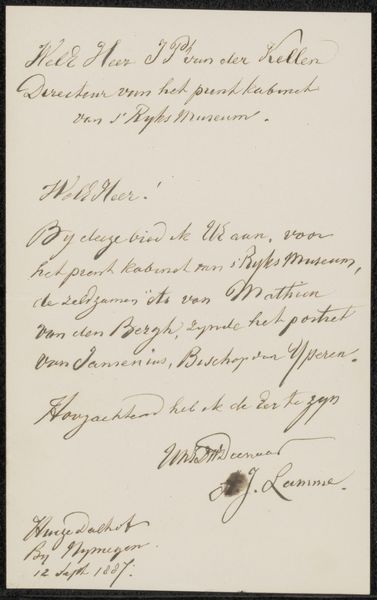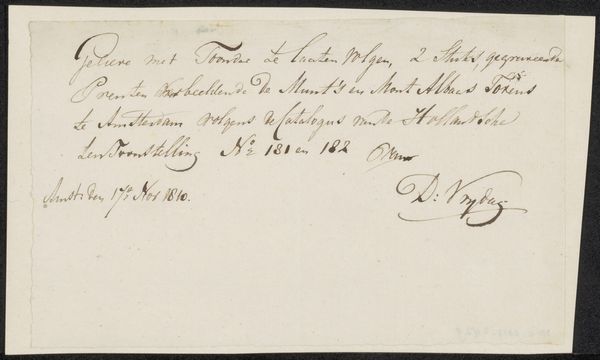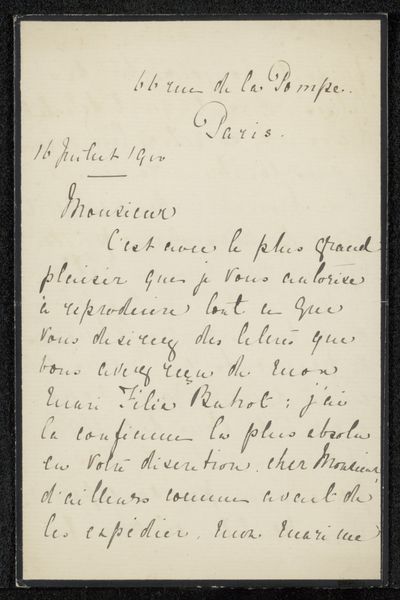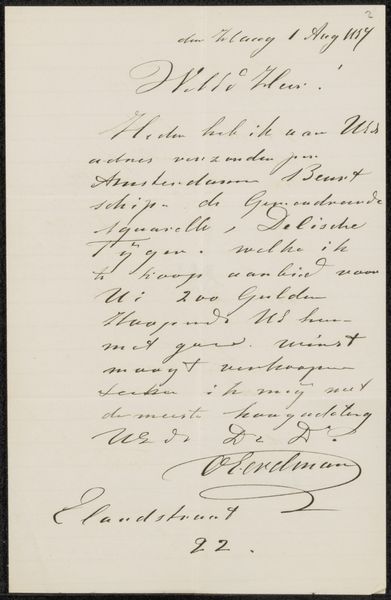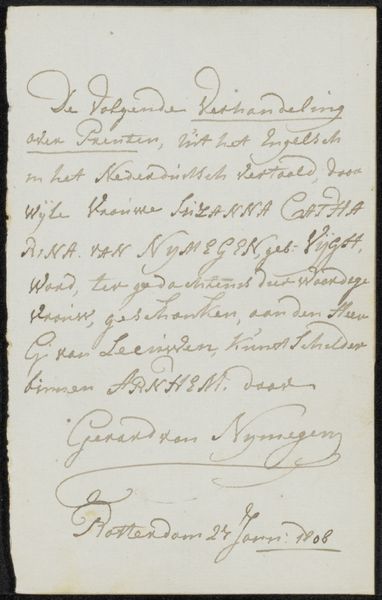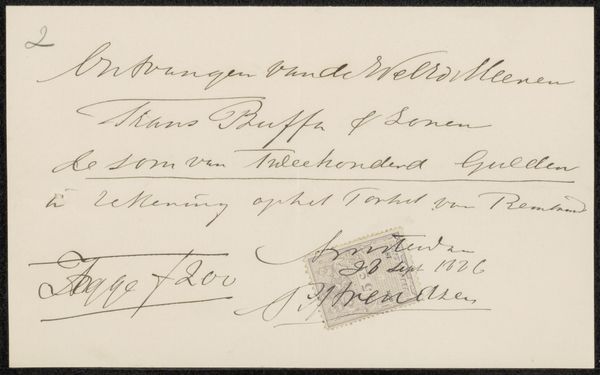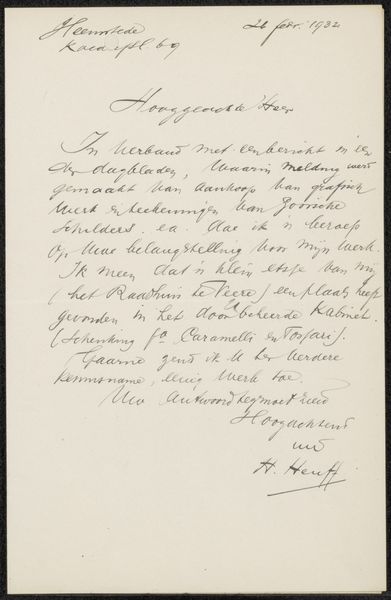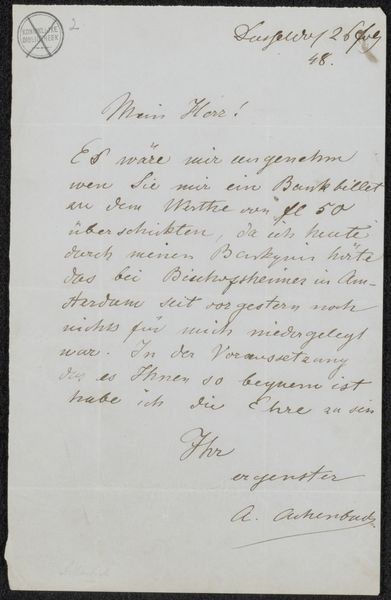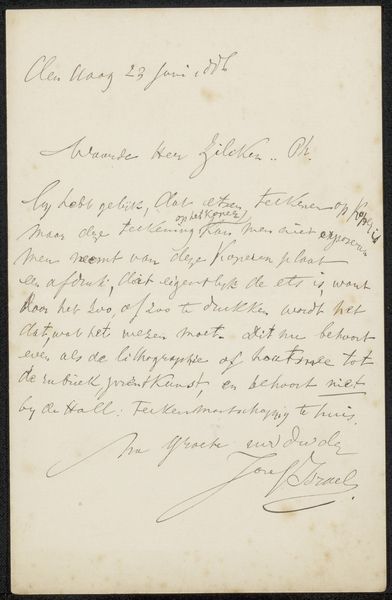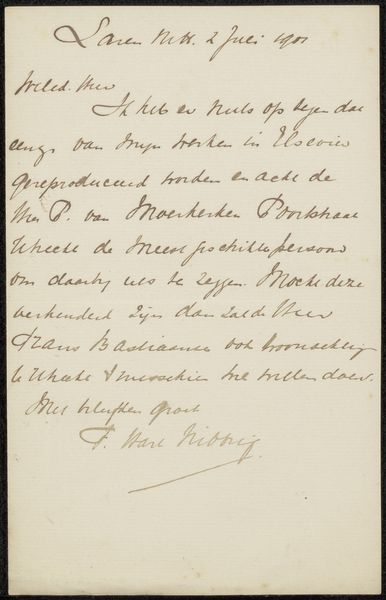
Copyright: Rijks Museum: Open Domain
Curator: Let's consider Anna van Wijngaarden-Boot’s "Brief aan Philip Zilcken," a letter rendered in ink on paper, likely from 1918 or 1919. What’s your initial impression of it? Editor: Well, at first glance, I’m struck by its intimacy. It feels like a glimpse into a private exchange, almost like we’re not supposed to be reading it. How does this handmade quality influence the piece as a whole? Curator: Precisely! Think about the materials – ink and paper. What does that imply about its production? It suggests a personal investment of time and skill. The handwriting itself becomes a crucial element. It's not just about the information conveyed but the labor of inscription. Consider too the social context: handwriting was a primary form of communication at the time. It challenges our contemporary assumptions about the speed and accessibility of communication today. How might this object engage with ideas of value related to craft? Editor: That’s a good point. We don’t really think about the labour involved in writing anymore, but back then each letter was carefully made. Does this link to contemporary discussions about automation in creative production? Curator: Yes, absolutely. This connects to modern dialogues surrounding mass production and the unique value of handmade goods versus industrial standardization, or how a handwritten note challenges mass production, or machine letter typefaces. What do you take away from this piece now? Editor: I see now that it isn’t just a letter. It embodies labour, and reflects larger historical shifts in materiality, like handwriting in the industrial age. Curator: Exactly! By examining the materials and context of its creation, we unlock a deeper appreciation for the complex relationship between art, craft, and society.
Comments
No comments
Be the first to comment and join the conversation on the ultimate creative platform.


